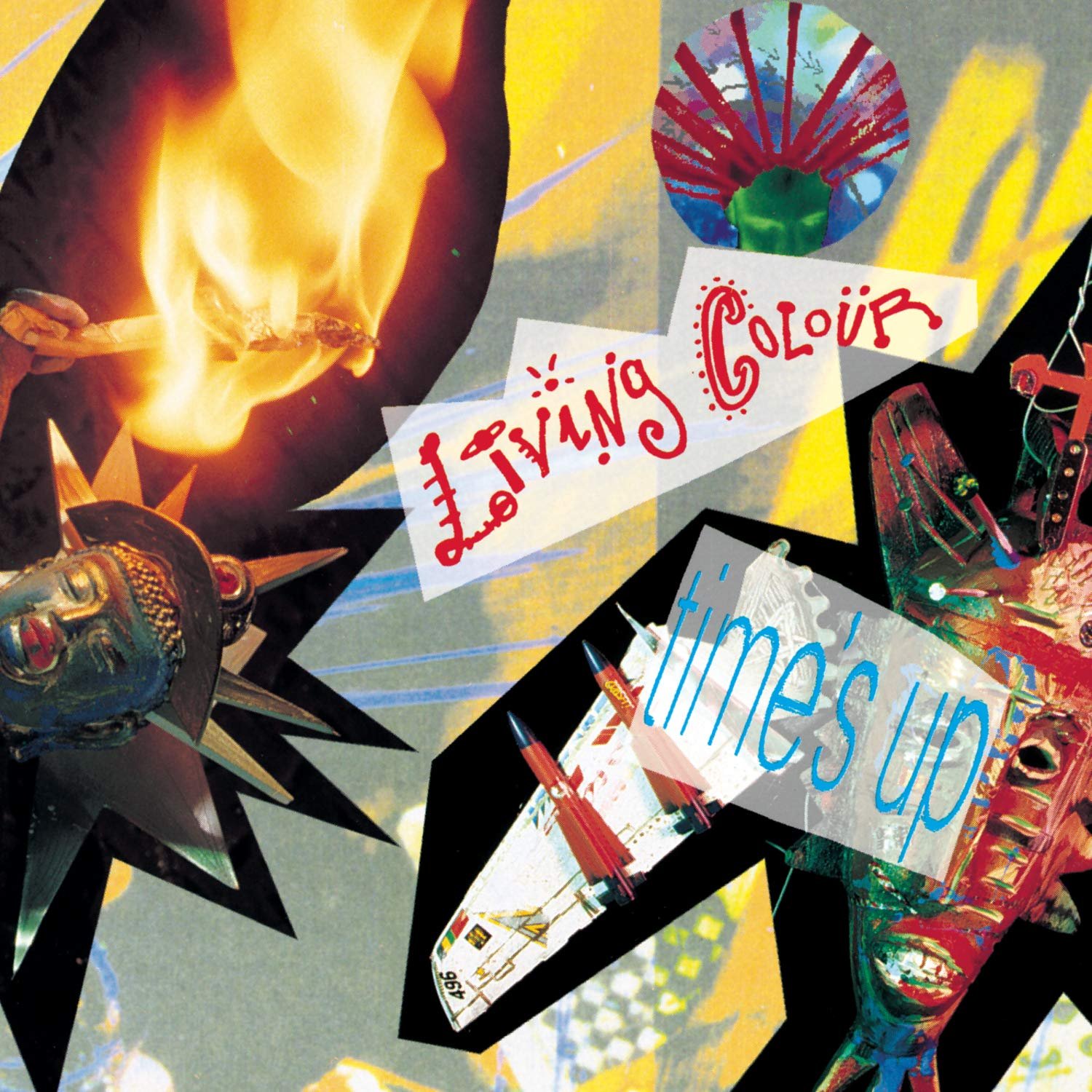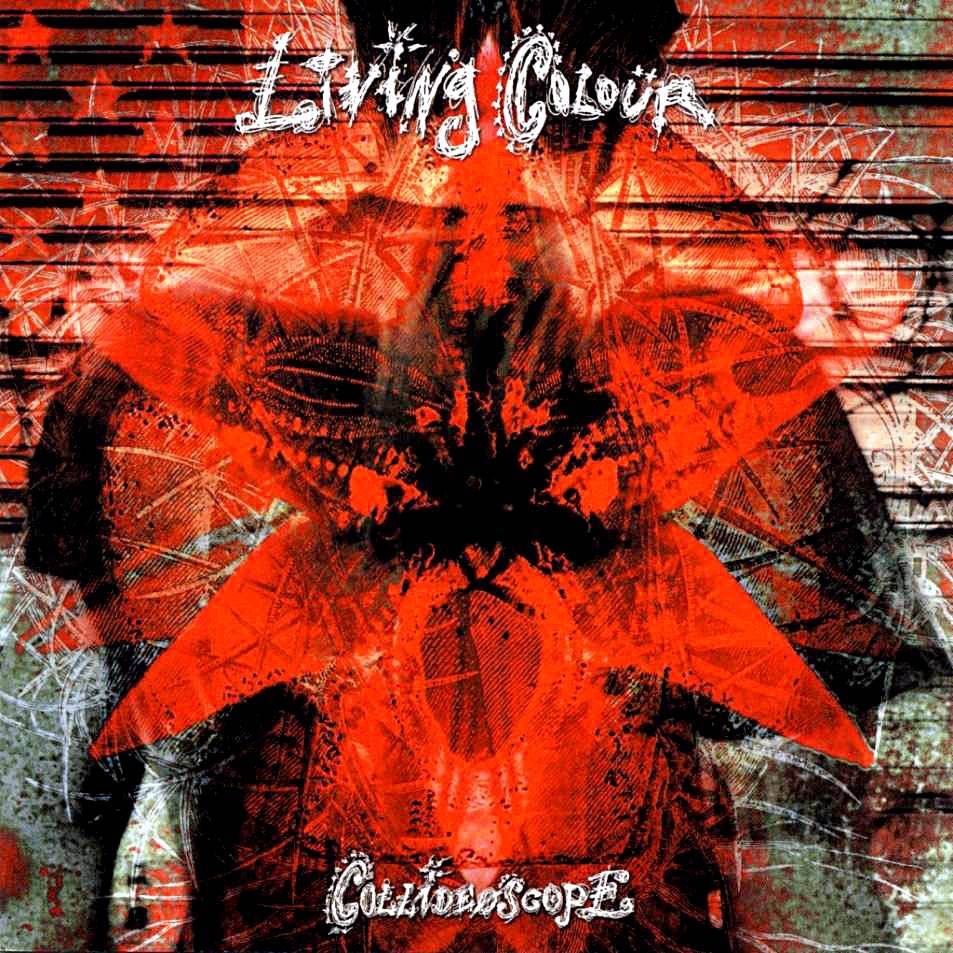Happy 35th Anniversary to Living Colour’s debut album Vivid, originally released May 3, 1988.
Music is by its very nature colourless. The melody and rhythms of it should appeal to one’s heart and soul. Yet too often music is labelled or designated for certain audiences and demographics. For an art form that is all about expression and transcendence, too often it is boxed in or pigeonholed. As George Clinton famously argued with Funkadelic, “Who says a jazz band can't play dance music? / Who says a rock band can't play funk? / Who says a funk band can't play rock?”
Despite an era of genre-defying artists like David Bowie, Prince and Michael Jackson finding major crossover success, there were still certain styles of music that were deemed white (rock) or black (funk/soul.) So when Living Colour burst through our speakers this week in 1988 with the glorious raucous riff that grounds “Cult of Personality,” a challenge to the status quo of rock being the exclusive domain of white artists was thrown down with an earth shattering thud.
The first time I heard “Cult of Personality” I was blown away. The clever inclusion of Malcolm X’s “Message to the Grass Roots” to intro the track not only alluded to a straight-talking approach to rock, but also served as a reminder that music was a universal language devoid of color lines. With an instantly iconic guitar riff opening and heavy pounding drums, “Cult of Personality” was ready to rock the foundations. With Corey Glover (one of the most underrated voices in music—period) leading the charge, “Cult” deals with the allure and trappings of our collective buy-in to fame and celebrity.
Name checking Stalin, Gandhi, Mussolini and Kennedy in the process, the band call out the positive and negative traits of charisma and the ability to crush or lift society. Laden with references to Orwellian 1984, hyper-consumerism, and the perceived threat of positive leaders like Martin Luther King Jr. and John F. Kennedy (“When a leader speaks / that leader dies”) “Cult of Personality” presented a band with a distinct voice and point of view. Guitarist Vernon Reid’s mind melting guitar solo is a mix of metal trickery and jazz freeform. Its one minute of frenetic fret board fingering made him an instant guitarist of note and made all of his contemporaries sit up and take note. Flash forward to a double-speak Trumpian era when a reality TV star can become president, the message (and warning) within “Cult of Personality” rings alarmingly true today.
As if deliberately playing with—and messing with—expectations, Vivid presents a band willing to defy convention and play the music it wants to hear. With musicians skilled in jazz, funk, rock, blues and soul, the fusion of these styles comes through time and time again as the needle journeys through the hard etched grooves of the album.
These elements are best exemplified by the tracks immediately following “Cult of Personality.” “I Want To Know” is a pop-rock gem that glistens with Beach Boys styled harmonies, 1970s KISS-like hooks and Larry Graham inspired bass plucks perfectly executed by the wandering fingers of bassist Muzz Skillings. “Middle Man” jolts us back to the hard rock of “Cult” and acts as an anti-hero theme song. “Desperate People” brings together all the elements of Living Colour in one hard hit. There’s Richter Scale rupturing drums, screaming guitars, reverberating bass and soulful vocals all reflecting the struggles and strife of isolation and deceiving comfort through addiction.
Watch the Official Videos:
Those opening four tracks bring a heavy sense of power to the album that propels you through one track to the next at full force. A momentary breath is given in the soulful opening of “Open Letter (To a Landlord)” that laments the gentrification of neighborhoods. “I call this place my home / you call this place a slum” Glover wails then perfectly summarizes the effect with his heartfelt, “Now You can tear a building down / But you can’t erase a memory / These houses may look all run down / But they have a value you can’t see.” Such impassioned singing is supported by a taught rocking riff and electrifying solo that swoops and soars. “Open Letter” was, and remains, a standout on the album.
At the halfway point, “Funny Vibe” offers up an entrée of hard rock before switching gears into a bubbling stew of hip-hop funk detailing societies’ default view of the black man as a threat. For a white kid growing up in Australia, “Funny Vibe” offered insight into the modern life of the black male and let me walk a mile in their shoes. With a cameo by Public Enemy’s Flavor Flav and Chuck D, the song packs a punch and challenges the media-fed stereotypes and built-in racism at play in our daily lives. It was an eye-opening song for me and remains a powerful example of how music can translate an experience so that it becomes shared. Often cited as being a band with a message, I tend to think of Living Colour more as a band with a voice, reflecting the world around them in the same way Bob Dylan has. It’s social commentary, but from a point of view not often heard from or paid attention to. And for that, it’s extra powerful.
Proving that great music has no racial profile, the band chose to cover Talking Heads’ “Memories Can’t Wait.” Talking Heads in their own right followed where the music led them, so it was fitting that, rather than cover an “expected” group, Living Colour followed suit and covered a song that had influenced them and already formed part of their live set. Taking what is a trippy post-psychedelic song and amping it up with levels of menace and paranoia, Living Colour reshape the track in their own likeness by adding extra fuel to the fire.
Listening to Vivid, and Living Colour in general, is like viewing music through a kaleidoscope, all the fragments of light, color and shade meld and shift effortlessly with each turn. The beat skipping “Broken Hearts” fuses blues with country against a hip-hop inspired groove and allows Corey Glover’s vocals to command attention in the way he pours his soul into every syllable and intonation.
A lot is made of the musicianship of the foursome (and rightfully so), but their craft as songwriters shouldn’t be neglected either. “Broken Hearts” is a powerful study in emotion and lyrics, providing space in the arrangement to allow little musical flourishes to take place including a harmonica solo by none other than Mick Jagger. Jagger’s involvement wasn’t restricted to just a guest spot. After seeing the band play a show at the famed CBGBs in New York City, Jagger went on to produce two songs for the album, “Glamour Boys” and album closer “Which Way To America”
“Glamour Boys” is a pop-rock-funk journey with bouncy guitar riff driven verses set against a rocking chorus with the somewhat unconvincing refrain of “I ain’t no Glamour Boy / I’m Fierce!” (I mean just how fierce can you be in a fluoro wetsuit?!?) That little disconnect aside, “Glamour Boys” showed that Living Colour could pop just as hard as they rock and do so in a way that is instantly infectious.
“What’s Your Favorite Colour? (Living Colour)” comes across as a funk variety theme song and while still hooky as all hell, plays more now to nostalgia than to feeling just as vibrant and current as the rest of the album.
Enjoying this article? Click/tap on the album covers to explore more about Living Colour:
Album closer (and Jagger’s other produced track) “Which Way To America” is a hard-hitting funk rock stroll through the promise and realities of the American Dream. With socially charged lyrics, Corey Glover comments, “I look at the TV / Your America's doing well / I look out the window / My America's catching hell … /… I want to know / How to get to your America.” Potentially the heaviest track on the album, “Which Way To America?” is grounded by Skilling’s thumping bass and contains another skyrocketing solo by Reid and Prince-level screams from Glover, culminating in a hard rocking reality check across the racial divide.
Once the album finished spinning I knew 2 things. One, I was hooked and would be a lifelong fan of Living Colour. And two, as a kid learning drums, I had just found a new teacher in Will Calhoun and would spend the following months playing along to and mastering every hi-hat bounce, pounding hit and glorious fill.
Since its inception, Vivid has endured as a powerhouse album winning the band critical acclaim, GRAMMY Awards and a wide reaching fan base. It was the perfect launching pad for a band that would continue to challenge the conventions of what kind of music bands should and shouldn’t play. Just as they did with their most current release Shade, Vivid puts music up front and has the power of its content and character front and center. If it’s great music, powerful playing and well-crafted rock you’re looking for, Living Colour is the perfect hue for you and Vivid is the perfect collage of style.
It’s bittersweet that much of Vivid’s commentary of a divided and imbalanced America still rings true 35 years on, but perhaps this is precisely why it deserves to be played once again, many times over, and played loud.
LISTEN:
Editor's note: this anniversary tribute was originally published in 2018 and has since been edited for accuracy and timeliness.



